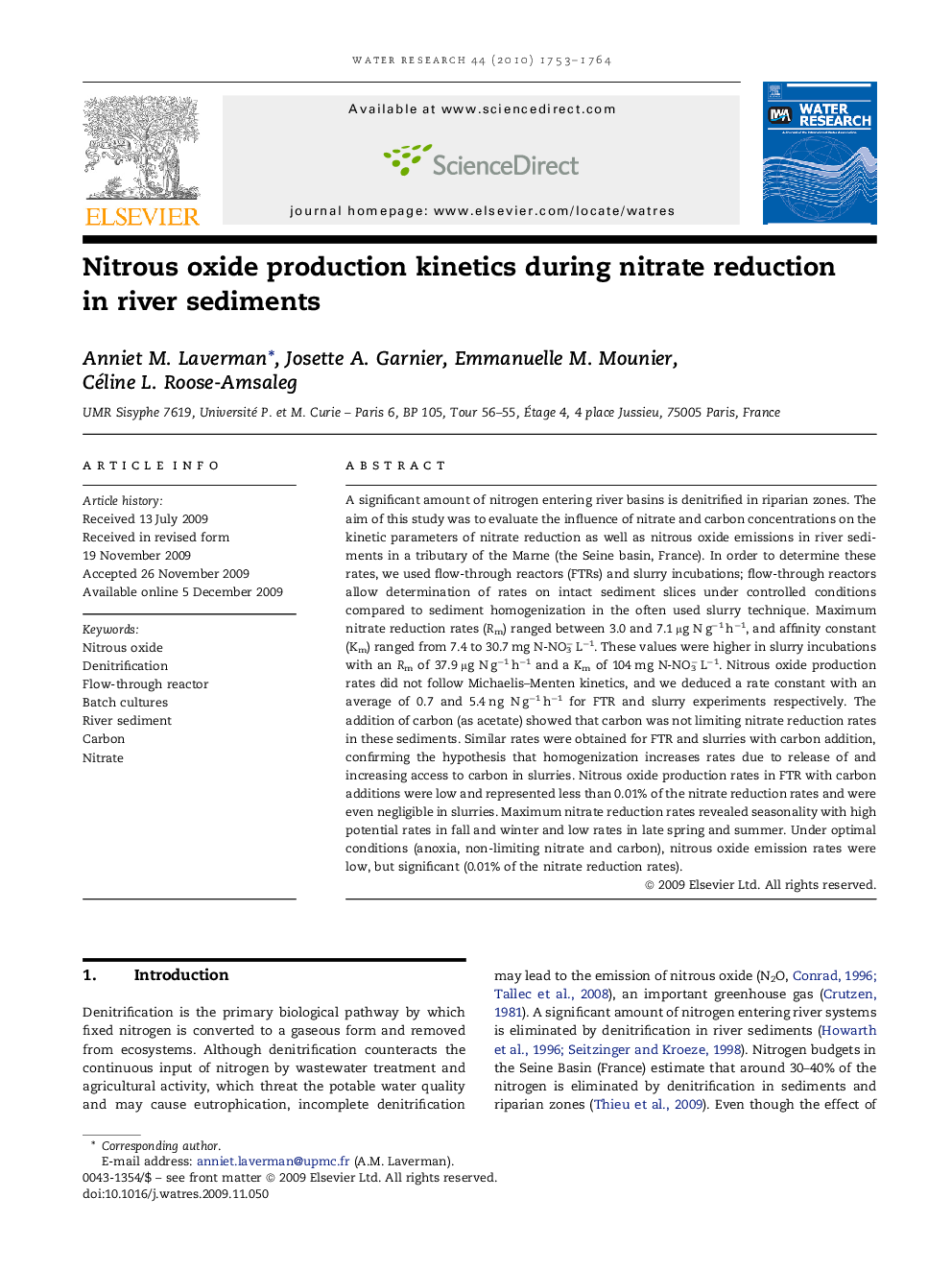| کد مقاله | کد نشریه | سال انتشار | مقاله انگلیسی | نسخه تمام متن |
|---|---|---|---|---|
| 4484154 | 1316911 | 2010 | 12 صفحه PDF | دانلود رایگان |

A significant amount of nitrogen entering river basins is denitrified in riparian zones. The aim of this study was to evaluate the influence of nitrate and carbon concentrations on the kinetic parameters of nitrate reduction as well as nitrous oxide emissions in river sediments in a tributary of the Marne (the Seine basin, France). In order to determine these rates, we used flow-through reactors (FTRs) and slurry incubations; flow-through reactors allow determination of rates on intact sediment slices under controlled conditions compared to sediment homogenization in the often used slurry technique. Maximum nitrate reduction rates (Rm) ranged between 3.0 and 7.1 μg N g−1 h−1, and affinity constant (Km) ranged from 7.4 to 30.7 mg N-NO3− L−1. These values were higher in slurry incubations with an Rm of 37.9 μg N g−1 h−1 and a Km of 104 mg N-NO3− L−1. Nitrous oxide production rates did not follow Michaelis–Menten kinetics, and we deduced a rate constant with an average of 0.7 and 5.4 ng N g−1 h−1 for FTR and slurry experiments respectively. The addition of carbon (as acetate) showed that carbon was not limiting nitrate reduction rates in these sediments. Similar rates were obtained for FTR and slurries with carbon addition, confirming the hypothesis that homogenization increases rates due to release of and increasing access to carbon in slurries. Nitrous oxide production rates in FTR with carbon additions were low and represented less than 0.01% of the nitrate reduction rates and were even negligible in slurries. Maximum nitrate reduction rates revealed seasonality with high potential rates in fall and winter and low rates in late spring and summer. Under optimal conditions (anoxia, non-limiting nitrate and carbon), nitrous oxide emission rates were low, but significant (0.01% of the nitrate reduction rates).
Journal: Water Research - Volume 44, Issue 6, March 2010, Pages 1753–1764